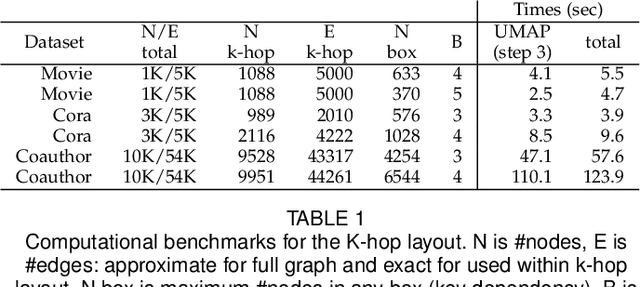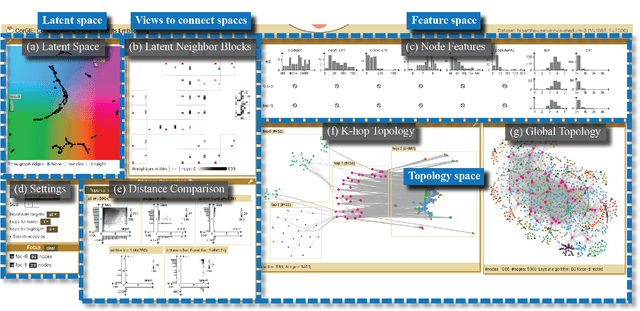Tamara Munzner
Visualizing Graph Neural Networks with CorGIE: Corresponding a Graph to Its Embedding
Jun 24, 2021



Abstract:Graph neural networks (GNNs) are a class of powerful machine learning tools that model node relations for making predictions of nodes or links. GNN developers rely on quantitative metrics of the predictions to evaluate a GNN, but similar to many other neural networks, it is difficult for them to understand if the GNN truly learns characteristics of a graph as expected. We propose an approach to corresponding an input graph to its node embedding (aka latent space), a common component of GNNs that is later used for prediction. We abstract the data and tasks, and develop an interactive multi-view interface called CorGIE to instantiate the abstraction. As the key function in CorGIE, we propose the K-hop graph layout to show topological neighbors in hops and their clustering structure. To evaluate the functionality and usability of CorGIE, we present how to use CorGIE in two usage scenarios, and conduct a case study with two GNN experts.
 Add to Chrome
Add to Chrome Add to Firefox
Add to Firefox Add to Edge
Add to Edge